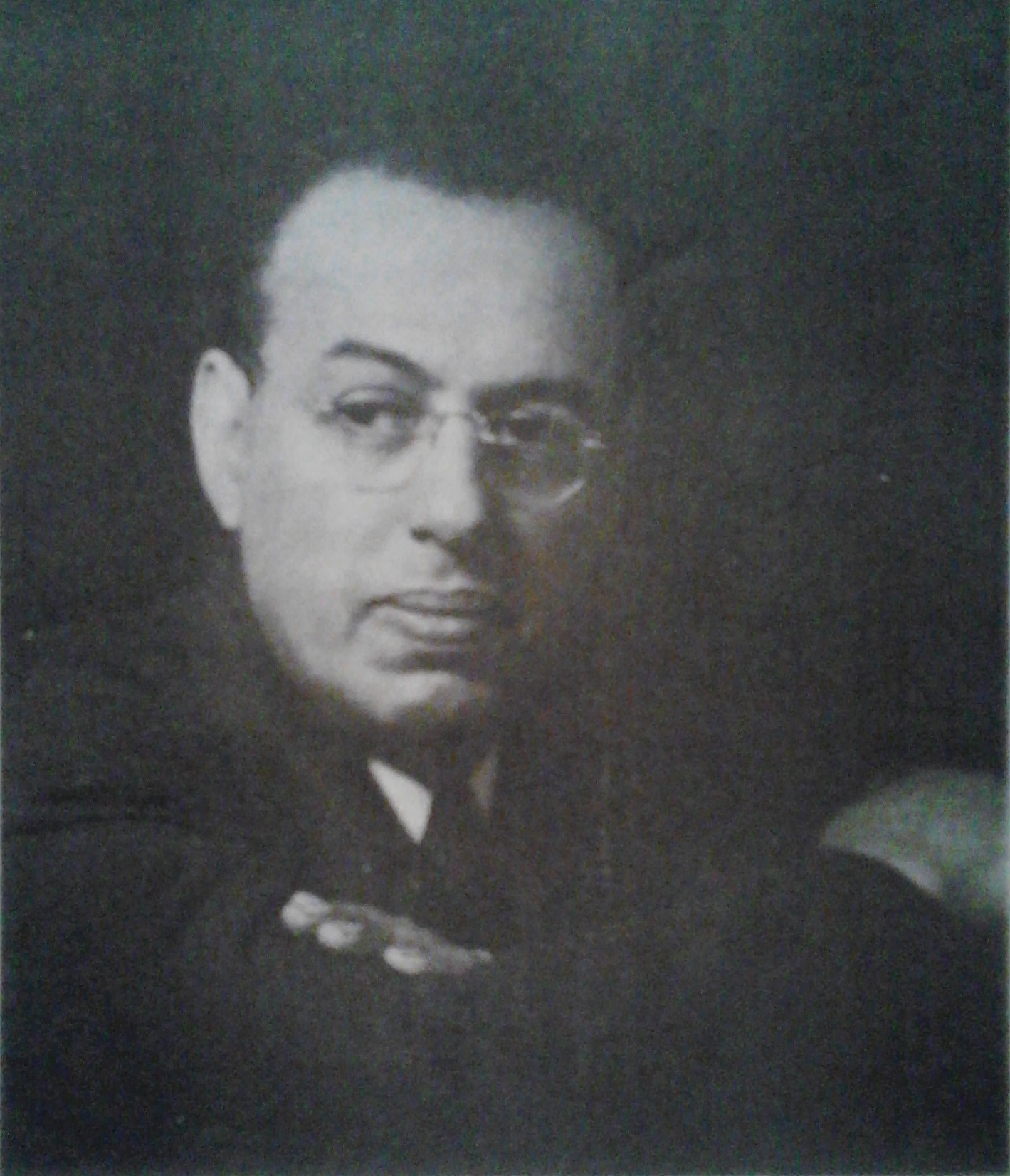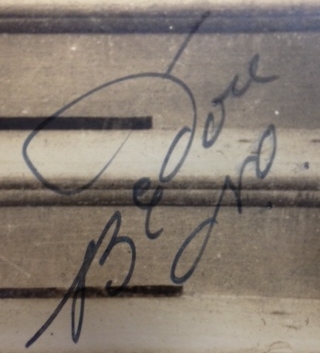The name of Arthur Paul Bedou ranks among the greatest of American photographers. With a career that stretched nearly seven decades, he photographed the leaders of his nation as well as the humble Creole families of his native city, with the attention to detail and artistry that make his photographs treasured possessions. Bedou, like many photographers was most often behind the lens; thus while they were almost universally known in their communities, researching the details of their lives can be challenging. Many New Orleanians for example, used the name Bedou as a household word – he was the photographer. Anyone too slow in taking a picture was often called a “Bedou” referring to the photographer’s insistence that every detail of a photograph be perfect – he thought it nothing to have his subjects stand for nearly an hour waiting for a cloud to move or ensuring that each and every face could be seen.
Arthur Paul Bedou was born on 6 July 1880 on Bayou Road near North Derbigny Street to Armand Bedou and Marie Celeste Coustaut. His parents had at least five children, yet only three sons: Armand, Jr., Raoul, and Arthur lived to maturity. His two older brothers followed their father in working as porters. For several years, they all worked at the Leon Godchaux Company on Canal Street. Arthur worked as a clerk for a short time, but by 1899 he entered the field of photography, which he would pursue almost until the time of his death. His career began in earnest after a picture he took of the solar eclipse of May 28, 1900 gained widespread recognition.
Early in his career, in 1903, Bedou brought his work to the attention of Booker T. Washington, the famed President of the Tuskegee Institute. For the next decade, Bedou and Cornelius M. Battey, a New York-based black photographer competed for Washington’s favor and most important, for the title of “Official Photographer” of the Institute. While Battey often created masterful portraits of Washington and others, Bedou was a Southerner who traveled with Washington on his trips and tours. Bedou was able to capture the spirit of Washington’s appearances and the noble nature of the work being done at Tuskegee. In addition to Washington, he photographed leading men of the nation such as George Washington Carver, Theodore Roosevelt, Julius Rosenwald, and Andrew Carnegie.
Through his connections with Washington, Bedou obtained projects at Fisk University, Wiley College, Bishop College, Prairie View University, and numerous other black colleges and universities. He served as official photographer for the National Medical Association, National Baptist Convention, and the National Negro Business League, which had been founded by Booker T. Washington in 1900. He served as photographer for the annual Louisiana Colored State Fair and traveled to Indianapolis in 1911 for the National Encampment of the Knights of Pythias, which was presided over by Smith W. Green, a business associate of Bedou’s from New Orleans.
In his hometown of New Orleans, Bedou was often called upon by Xavier University and other local colleges and schools to photograph their campuses, faculties, events, commencements, and to provide photographs for their school annuals. Bedou captured many local religious events such as the cornerstone-laying of Corpus Christi Church. He documented the visits of nationally known speakers and artists, including the deportation of Marcus Garvey. He often took photographs of Jazz bands, noted for their artistic quality and marketability. His services were sought by the high society of the city, both white and colored – often his pictures of debutantes and society weddings were featured in both The Louisiana Weekly, the city’s colored weekly, and in The Times-Picayune, its general daily paper.
He took hundreds of baby and childhood portraits, which he advertised as a specialty. He likewise captured scores of children dressed for their First Communions and Confirmations.
While he gained fame and monetary success for his studio and field wok, Bedou always yearned for more opportunities to do what he considered “art photography,” the sort of photographic virtuosic work which went beyond the paid work which he had mastered. In 1907 he achieved national distinction when he won the gold medal for photography from the Jamestown Tercentennial Exposition. Bedou captured a photograph of the partial eclipse of June 8, 1918 in City Park, which was singularly featured by The Times-Picayune.
In the late 1930s, the well-known Chair of the Art Department at Dillard University, Vernon Winslow, began annual exhibitions of Negro paintings and photography. Bedou won several prizes for his photographs of people, old plantation homes, and landscape scenes. Professor Winslow arranged for the first public viewing of the great master’s work in April 1944.
Bedou was a very frugal man who saved tremendously and invested wisely in property near his home of Bienville Avenue in the city’s Fourth Ward. He was an initial investor and director of the Peoples Industrial Life Insurance Company. He served as Vice President of the company for many years and served as sergeant-at-arms of the New Orleans Insurance Executives Council.
Bedou loved to dance and to attend social affairs, particularly when they were free. He was aware of his rich heritage which stemmed from Africa, France, and Sainte-Domingue by way of Cuba. He never lost his ability to speak the French language which was regularly spoken during his youth. He was a devout Catholic and parishioner of Saint Katherine Church on Tulane Avenue.
Upon his death on 2 June 1966, he ended his masterful career in photography and a long life which was well-led. Substantial sums were left to Xavier Preparatory, Saint Mary’s Academy, and Xavier University, where a perpetual scholarship exists in his name. Though many have been lost to fires, floods, and the passage of time, hundreds of examples of his artistic ability can be found in archives, libraries, and family collections around the country.
Source: Twenty-Fifth Anniversary Souvenir Booklet, Peoples Industrial Life Insurance Company.
J.C.L.H.





I still remember when Bedou did our family portrait, because he wouldn’t let me go to the restroom and I invariably peed on myself and the trickle down my leg can be seen in the portrait. I was about five years old then & it was one way to distinguish me from my twin brother. It is still one of my treasured possessions.
Mr. Bedou was a very dear friend of my grandmother. I still have my First communion picture as well as my 1st birthday picture. These pictures have never faded and look as crisp as when I first sat for the photo’s.
My Aunt Shirley retouched pictures for Mr. Bedou.Him and his wife were good people.
Mr. Bedou took family portraits for our family….my father….Atty Benjamin J. Johnson Sr. and Mr. Bedou were business associates as well as friends…. Mr Bedou was a wondefully nice man…..
Arthur Bedou took amazing photographs of my Logan grandparents and their children (including my father) at Tuskegee Institute in 1913. I have several copies which I treasure
Booker T. Washington has entered into our research several times in fact, we have a posting here about his three trips to New Orleans. From old Tuskegee publications and BTW biographies and letters, we have come to know how important Warren Logan and the coterie of assistants were to BTW. Glad to know that Mr. Bedou was able to document that time of real ‘Race Men.’
He took pictures of all of us,the Cantrelle family. He and my daddy, Ira Cantrelle, were friends.I still have my first communion picture. I lost my baby picture in the storm.
Mr Bedou shot my mother’s (Laura Robert) baby picture in about 1921.
Pingback: History of NOLA Photography Part 2: Early 20th Century-Civil Rights Movement – Gigsy
I am a descendant of the Coustaut (Crusto) family. Mitchell Crusto
Arthur P Bedou was the brother of my Mom’s Dad, who was named Armand Bedou. My mother’s birth name is Celeste Bedou and her mother’s name was Mathilda Dannel.